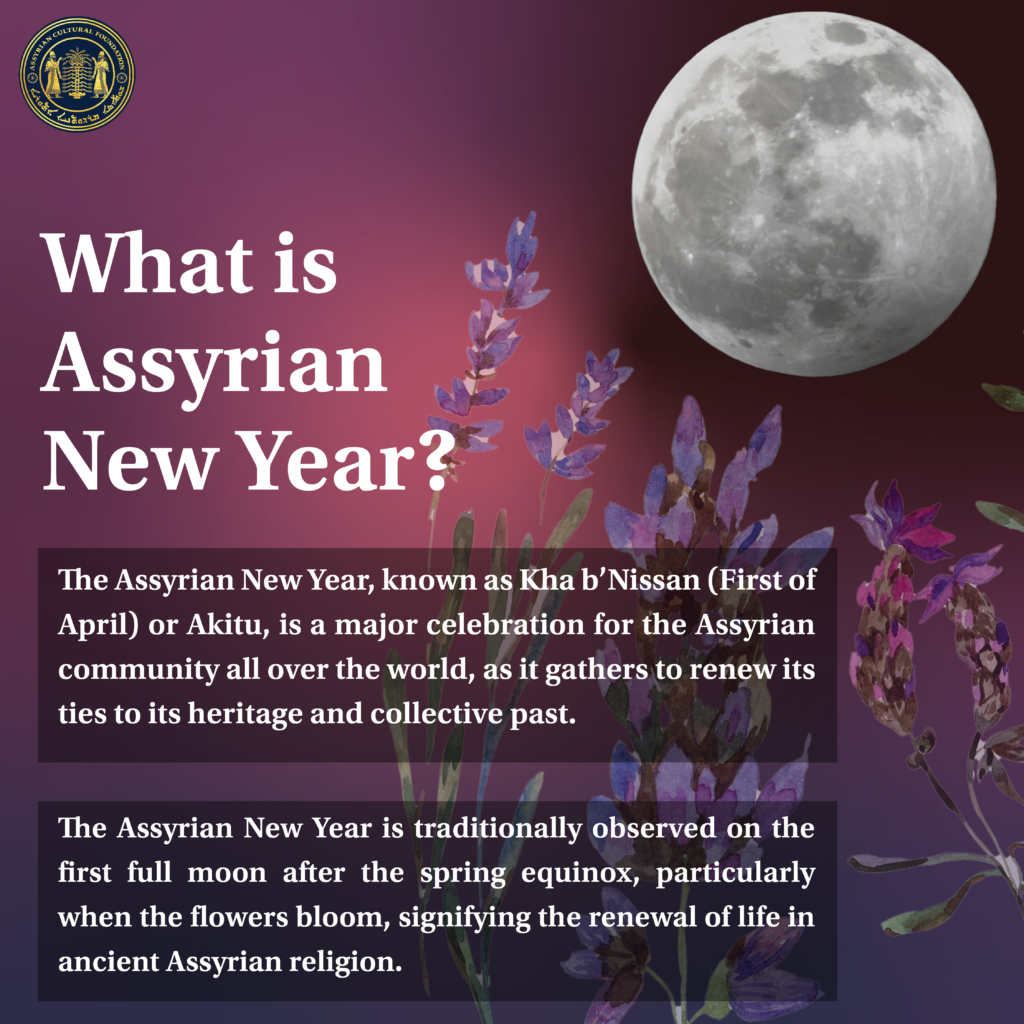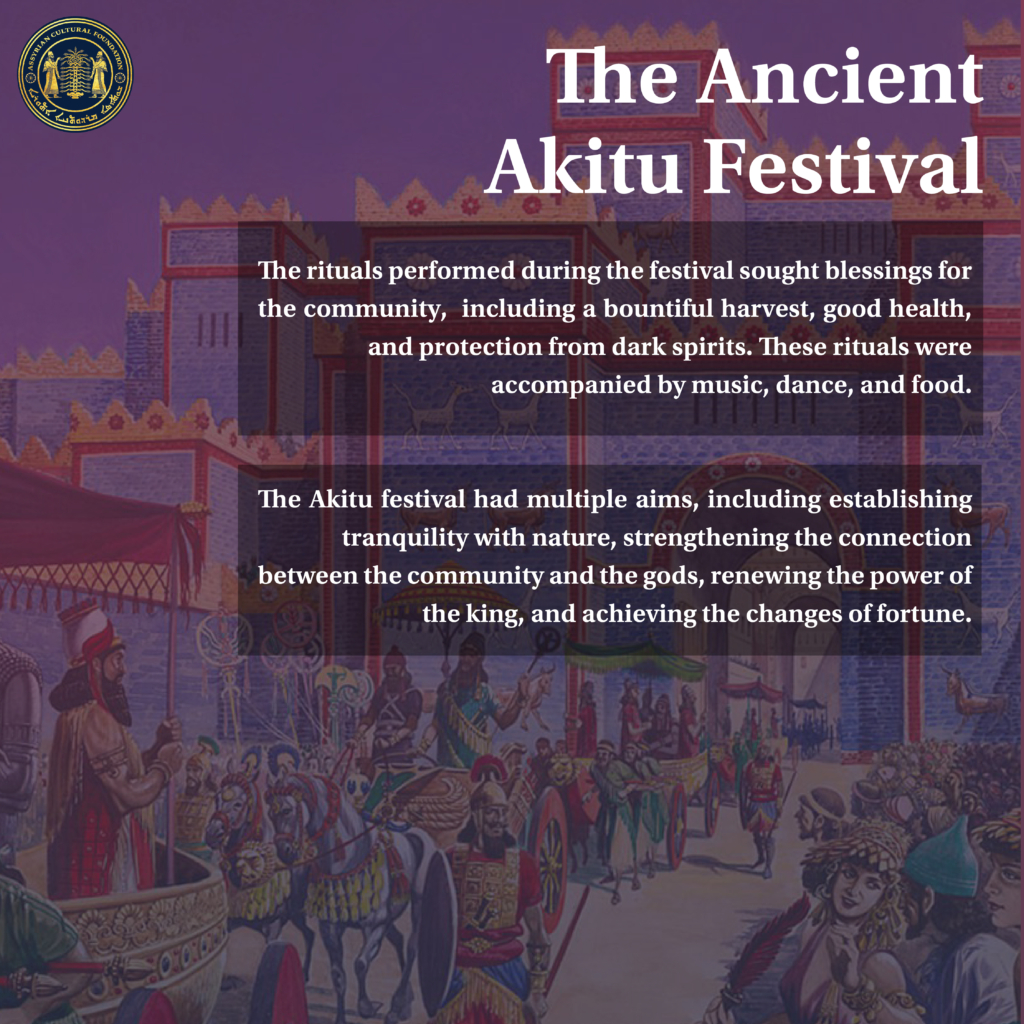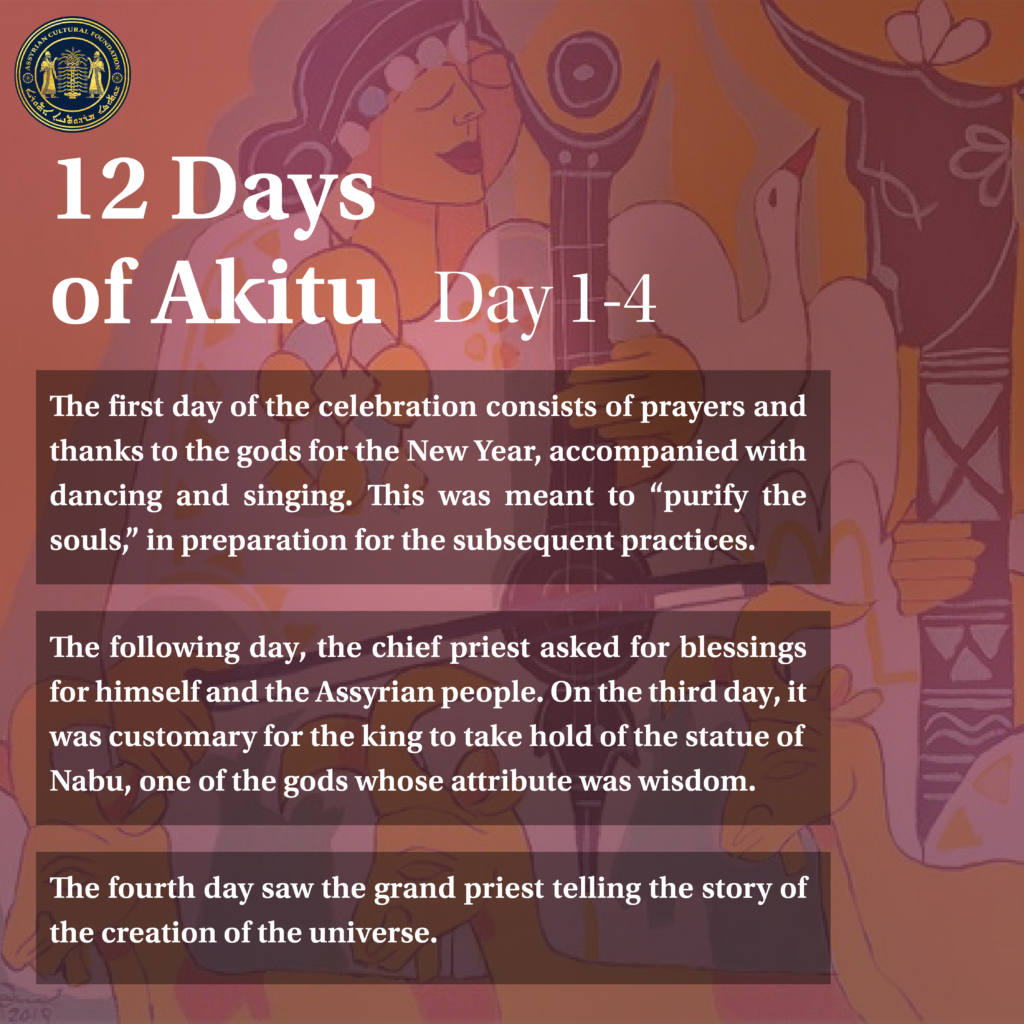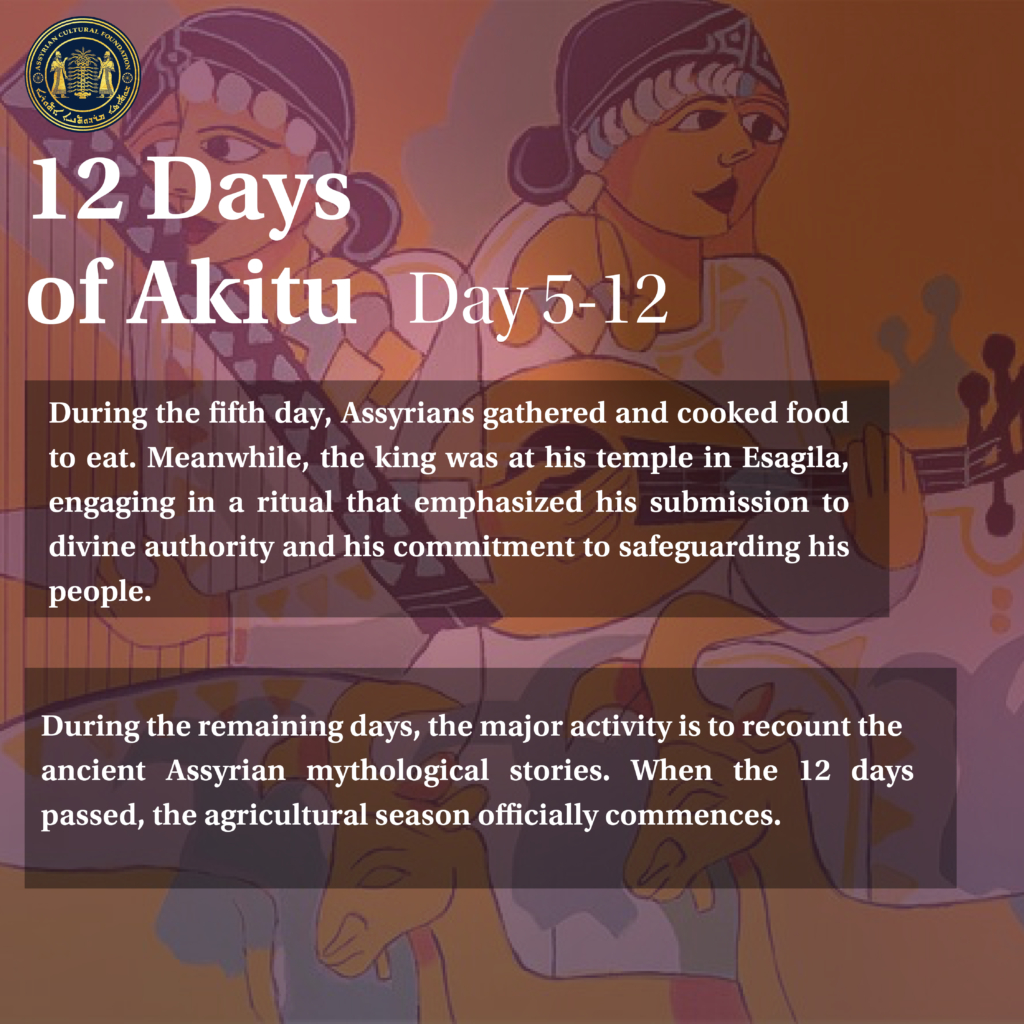What is Assyrian New Year?

The Assyrian New Year, known as Kha b’Nissan (First of April) or Akitu, is a major celebration for the Assyrian community all over the world, as it gathers to renew its ties to its heritage and collective past.
The Assyrian New Year is traditionally observed on the first full moon after the spring equinox, particularly when the flowers bloom, signifying the renewal of life in ancient Assyrian religion. However, with the spread of Christianity in the Middle East, many modern Assyrians have retired the celebrations due to their adherence to the Christian faith and the distrust of what Christian clerics considered pagan practices.
Nationalism’s rise among Assyrians led to organized efforts to revive ancient traditions, and so
Akitu, having lost its religious standing, became a cultural event.
This blog delves into the history of the festivities of the pre-Christian Assyrian New Year. I will discuss the cultural and religious practices that were prevalent among the Ancient Assyrians.

The rituals performed during the festival sought blessings for the community, including a bountiful harvest, good health, and protection from dark spirits. These rituals were accompanied by music, dance, and food. The Akitu festival had multiple aims, including establishing tranquility with nature, strengthening the connection between the community and the gods, renewing the power of the king, and achieving the changes of fortune. The ancient Assyrian New Year is a characteristic of the rich cultural heritage of the Assyrian community, and it continues to motivate and shape their traditions today.

The first day of the celebration consists of prayers and thanks to the gods for the New Year, accompanied with dancing and singing. This was meant to “purify the souls,” in preparation for the subsequent practices. The following day, the chief priest asked for blessings for himself and the Assyrian people. On the third day, it was customary for the king to take hold of the statue of Nabu, one of the gods whose attribute was wisdom.
The fourth day saw the grand priest telling the story of creation. In other words, the grand priest will recite the story of the creation of the universe and all four seasons.

During the fifth day, Assyrians gathered and cooked food to eat. Meanwhile, the king was at his temple in Esagila, engaging in a ritual that emphasized his submission to divine authority and his commitment to safeguarding his people. In this ritual, as part of his demonstration of loyalty to Assyria, the king would be required to strip down and bow before his Lord Assur. This ritual was a display of submission and obedience to the God Assur, attesting the king’s dedication to preserving Assyrian culture and his subservience to his Lord. At the end of this ritual, the high priest will give the king back his robe and jewelry.
During the remaining days, the major activity is to recount the ancient Assyrian mythological stories. When the 12 days passed, the agricultural season officially commences.
This year, the Assyrian community will celebrate the marking of 6773 years. We highly recommend that everyone attends the New Year festivities!
Written by: Sarah Gawo
Bibliography
“Assyrian New Year – History.” Assyrian American Association of San Jose, https://www.aaasj.org/history-of-assyrian-new-year.
Assyrian Universal Alliance Australian Chapter. “The 1st of April: (Akitu).” Assyrian New Year Festival: 6765/2015, 2015.
Giwargis, Ashur. “The Meaning of the Assyrian New Year.” Assyrian International News Agency, 31 Mar. 2012, http://www.aina.org/news/20120330204123.htm.
Kamber, Emmanuel Y. “Khä B’Nësán (April 1st) – Akitu – Assyrian New Year.” Atour, 29 Mar.
2001, https://www.atour.com/education/20010329a.html.
Lang, Esther. “Kha B’Nissan-The Assyrian New Year.” Assyrian Cultural Foundation, 20 Mar.
2017, https://www.auaf.us/blog/kha-bnissan-the-assyrian-new-year-2/.
Shams, Alex. “The Joys of Akitu, the Assyrian New Year.” Ajam Media Collective, 22 Jan. 2023, https://ajammc.com/2017/04/05/the-joys-of-akitu/.
Solia. “Happy Assyrian New Year 6772.” Omni Dental, 29 Mar. 2022, https://omnidentalgrp.com/happy-assyrian-new-year-6772/.
Websites-
https://www.aaasj.org/history-of-assyrian-new-year
http://www.aina.org/news/20120330204123.htm
https://www.auaf.us/blog/kha-bnissan-the-assyrian-new-year-2/
https://www.atour.com/education/20010329a.html https://omnidentalgrp.com/happy-assyrian-new-year-6772/ https://ajammc.com/2017/04/05/the-joys-of-akitu/ Magazines-
Assyrian New Year Festival: 6765/2015 by Assyrian Universal Alliance Australian Chapter
